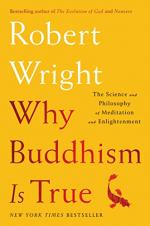
|
| Name: _________________________ | Period: ___________________ |
This quiz consists of 5 multiple choice and 5 short answer questions through Chapters 10-12.
Multiple Choice Questions
1. What kind of benefits does the author describe self-delusion as harboring?
(a) Intellectual.
(b) Darwinian.
(c) Personal.
(d) Evolutionary.
2. When the author discusses his wife in an illustration, whom does he name as a potential stimulus in his wife's environment that would be “seen to not merit extended, conscious appraisal” (163)?
(a) The author's sister.
(b) The author's father-in-law.
(c) The author's uncle.
(d) The author's brother.
3. The author states that repeated studies have shown that the brain reacts similarly to physical pain and what other element?
(a) Regret.
(b) Social rejection.
(c) Anger.
(d) Humiliation.
4. Chapter 10 is entitled "Encounters With the" what?
(a) Empty.
(b) Universe.
(c) Faithful.
(d) Formless.
5. What problem does the author say afflicts him when he is trying to work?
(a) A constant hunger.
(b) A tendency to daydream.
(c) A short attention span.
(d) A need to move around.
Short Answer Questions
1. With what system is the dorsolateral prefrontal cortex associated?
2. The author states that as times change, so should conclusions and what other element?
3. Who is the author of the book called What the Buddah Taught?
4. What adverb is used to describe briefly exposing someone to a word or an image, but not long enough for conscious awareness to set in?
5. The author notes that it is generally easier for one to distance oneself from one’s emotions than one’s what?
|
This section contains 238 words (approx. 1 page at 300 words per page) |

|




